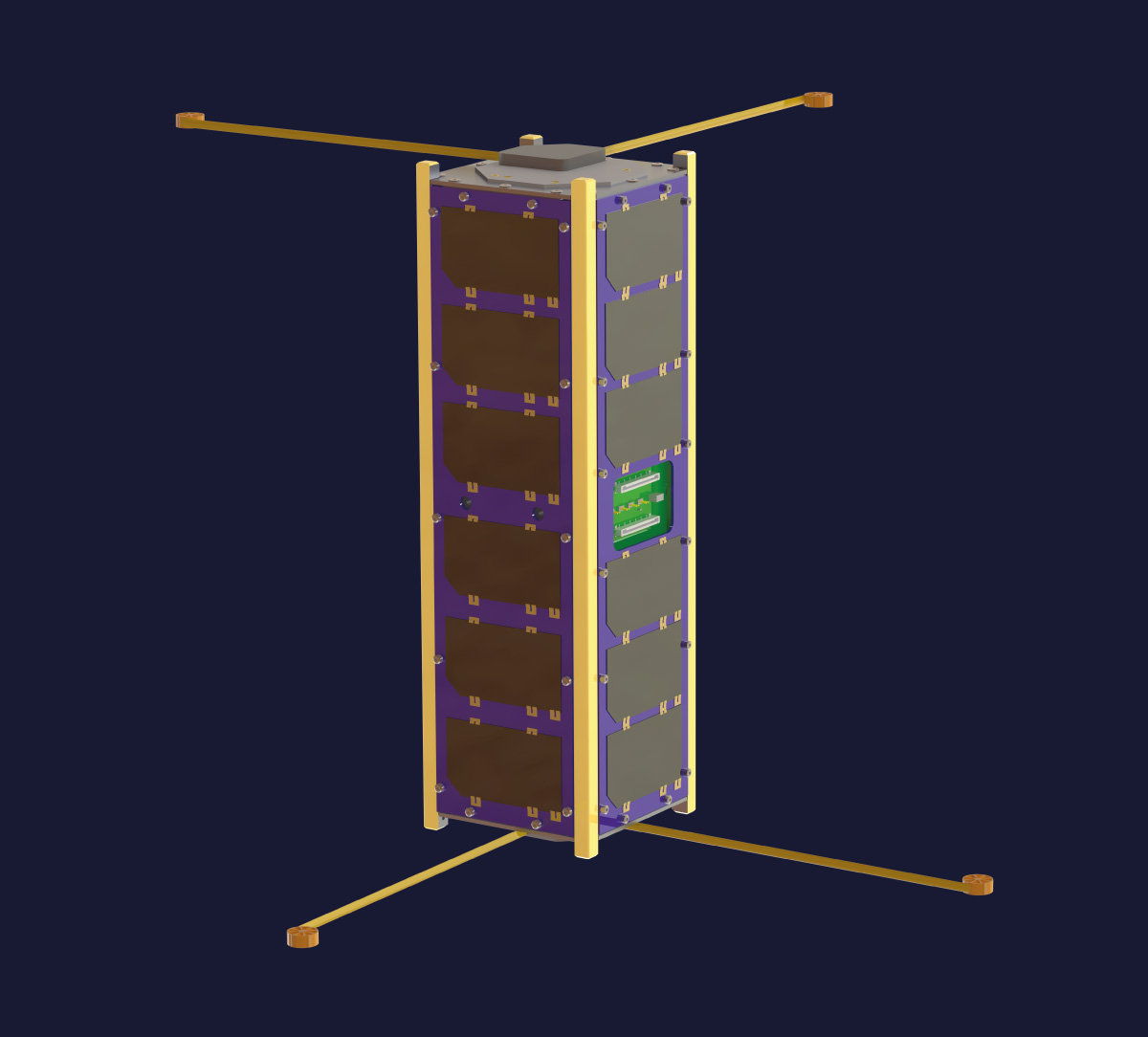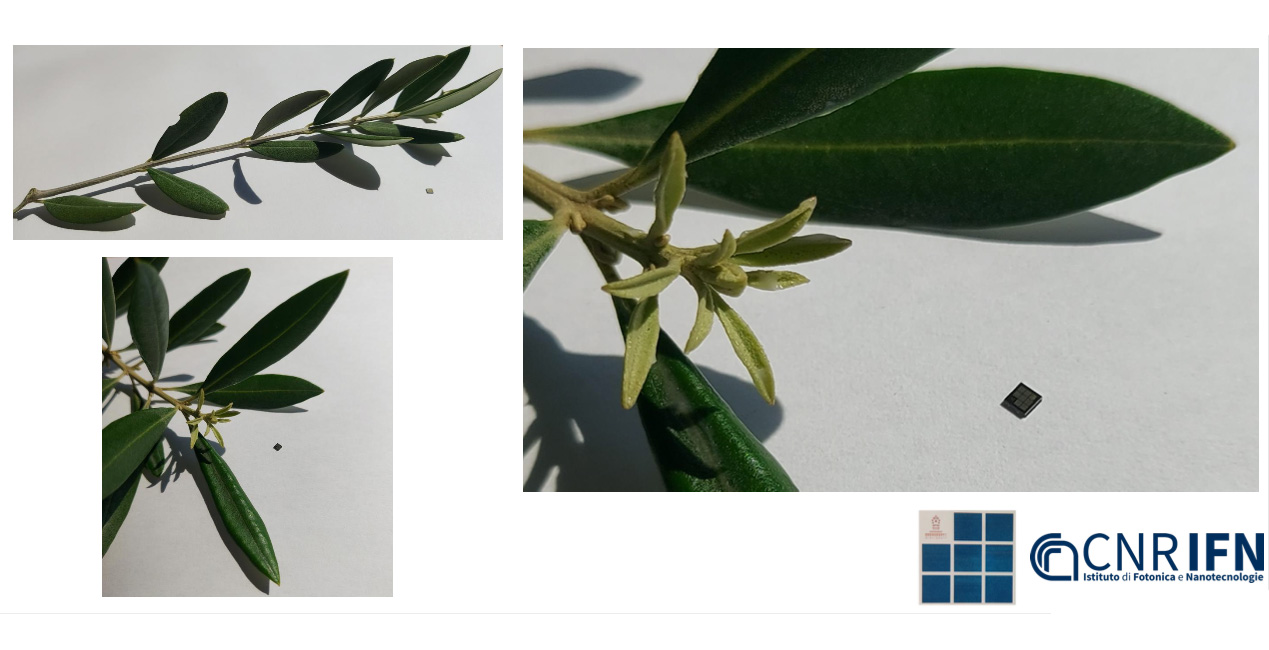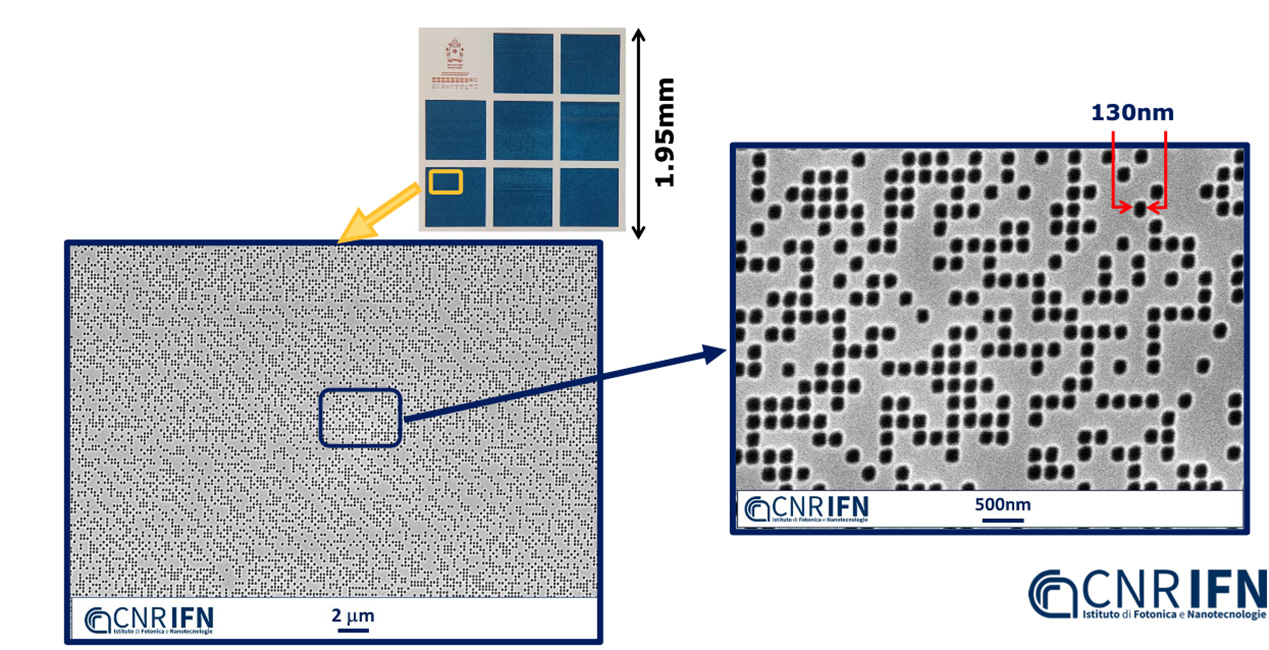
Technique
Satellite

CubeSat
Spei Satelles is a 3U CubeSat, i.e. a small satellite measuring 34x10x10 cm and weighing less than 3 kg. The external surface of the satellite is covered by solar panels, which allow the production of the electrical power necessary to power its devices. SpeiSat hosts several components: two on-board computers, two communication systems in the UHF band (it is therefore equipped with two antennas), a battery for energy storage, small magnets for satellite stabilization after launch and a suite of thermal and inertial sensors to collect measurements in the space environment.
Furthermore, SpeiSat physically keeps a nanobook with the Holy Father's book in his shell and a file containing the messages of hope to be spread during his journey. SpeiSat operates in low Earth orbit, more precisely in a sun-synchronous orbit at about 525 km of altitude from the Earth's surface.
Transmitter data:
- Frequency: 437.5MHz
- Modulation: GMSK at 9600 bit/s
- Protocol: AX.25
 The cubesat was created by the students and teachers of the Polytechnic of Turin
The cubesat was created by the students and teachers of the Polytechnic of Turin
Nano-libro

Nano-book
The nano-books are miniaturized objects, made starting from polished silicon supports, thin plates made of dark gray crystalline material. On these substrates, which are square in shape and slightly smaller than 2 mm, nanometric-sized holes have been "engraved", i.e. smaller than a thousandth of the thickness of a human hair.
Since it was not possible to make a conventional miniature print at such small dimensions, a "code" was used: the digital contents of the paper book were transformed into a sequence of 0 and 1, the binary code used in information technology. In correspondence with each "1" a nano-hole was made, while for each "0" an empty space was left. In this way it is possible to recover all the information of the original book by "reading" the sequence of nano-holes present on the surface.


How is it possible to engrave and see such small structures? With nanotechnology! Technologically advanced tools that allow to modify materials and measure the morphology of surfaces in an extremely accurate way and at an extremely small scale.
 The nanobook was fabricated by the Institute of Photonics and Nanotechnology of the National Research Council of Italy.
The nanobook was fabricated by the Institute of Photonics and Nanotechnology of the National Research Council of Italy.
Il lancio
The launch is scheduled for June 12, 2023 from Vandenberg Base (VSFB) in California, USA.
The CubeSat will travel aboard a Falcon 9 rocket, SpaceX's partially reusable two-stage rocket, and will be hosted on the ION SCV-011ION platform, the satellite carrier developed, built and operated by the Italian company D-Orbit, which performs launch and release services into orbit.
SpeiSat will then be released into Low Earth Orbit (LEO) at an altitude of approximately 525 km and will follow a sun-synchronous orbit (Sun-Synchronous Orbit-SSO), which combines altitude and inclination such that the CubeSat flies over any given point on the earth's surface always at the same local solar time.
Here are some technical data of the mission.
- Launch Date: 12/06/2023
- Launch Base: VSFB (California, USA)
- Release orbit: Circular
- Altitude [km]: 525 ±25
- Tilt [degrees]: SSO ±0.1
- MLTDN [hh:mm]: 13:00 +60min
- Injection accuracy [degrees] < 10
- Release time after launch [days] > 7
